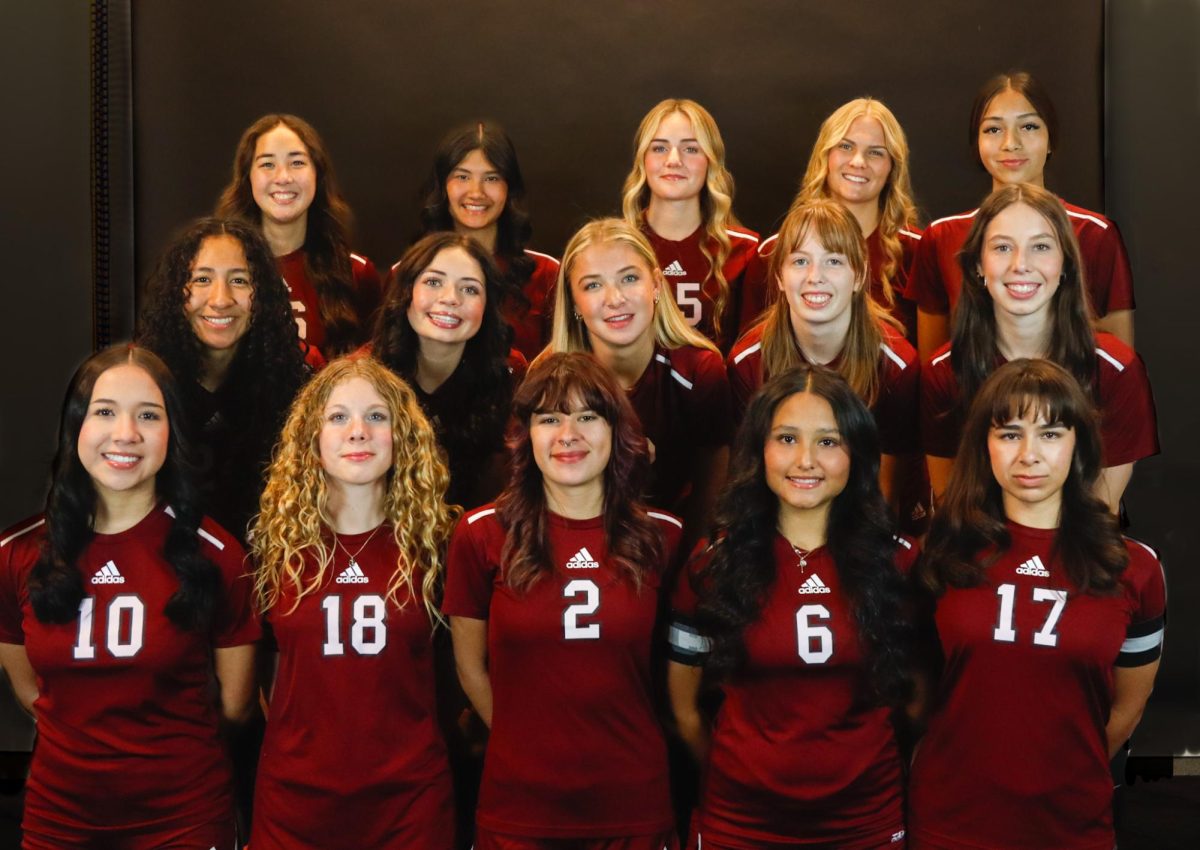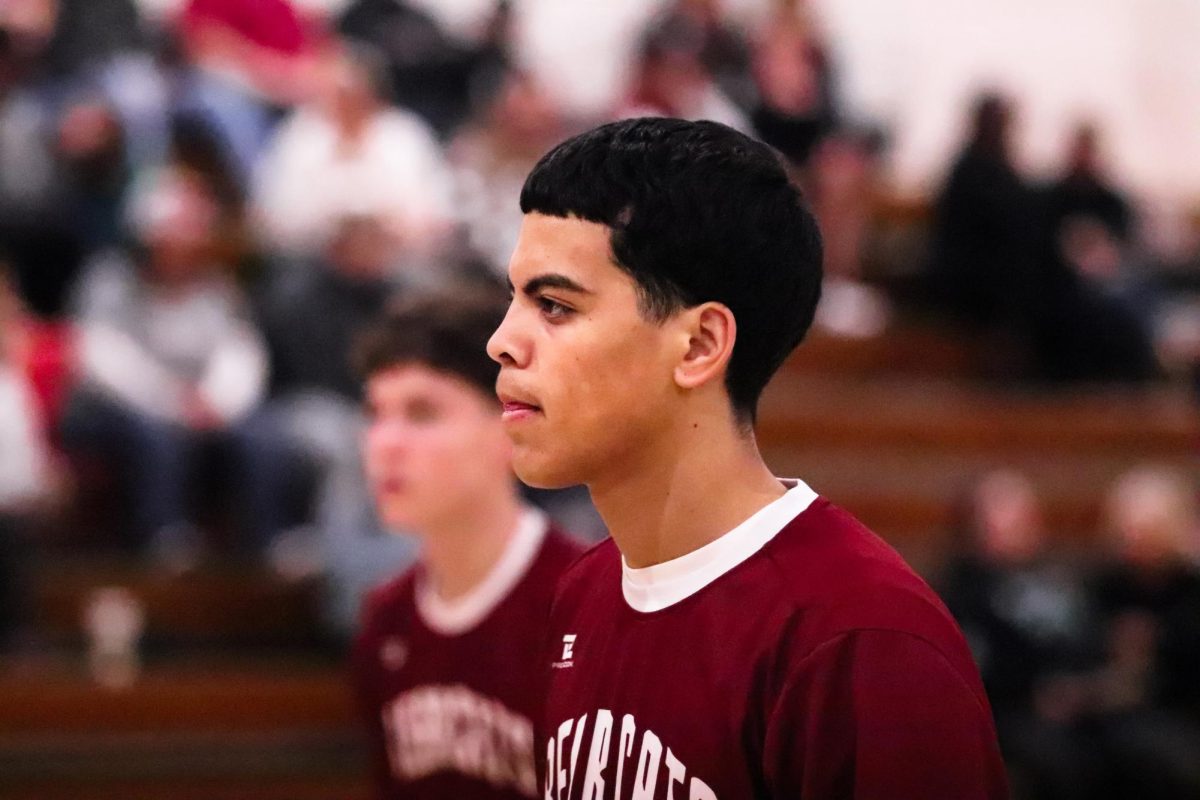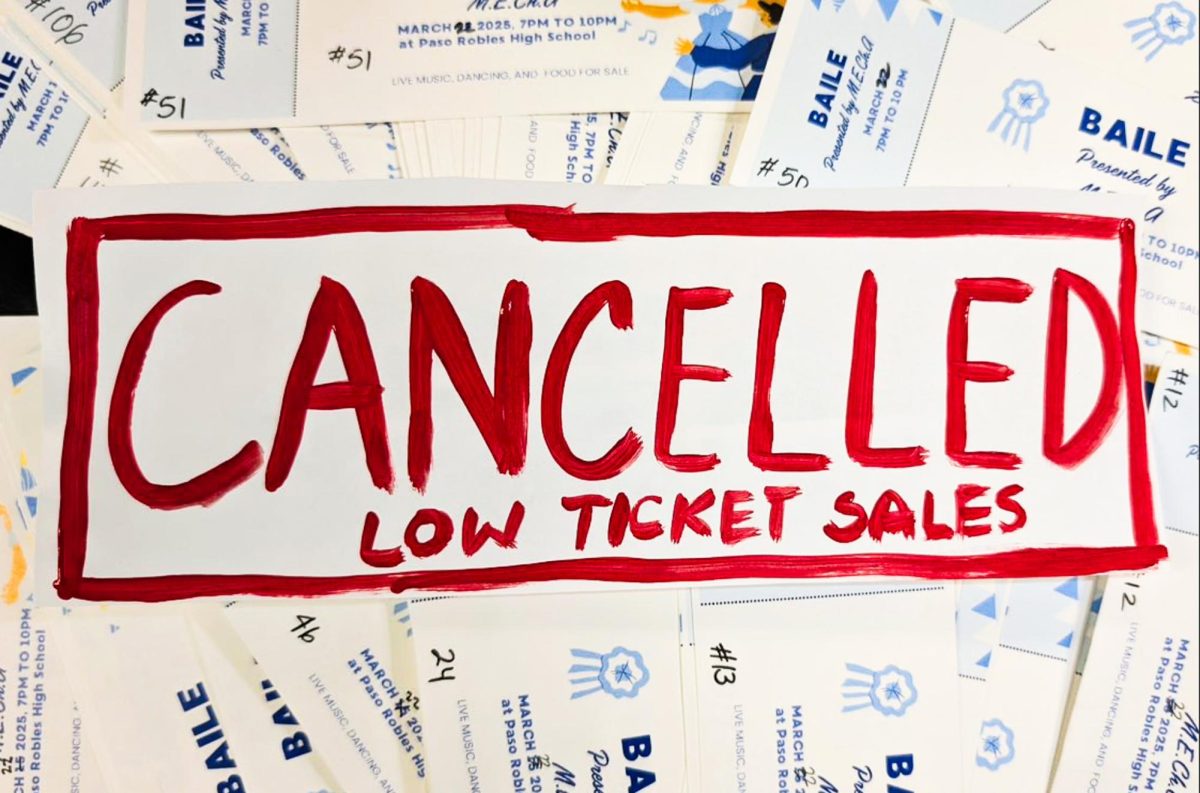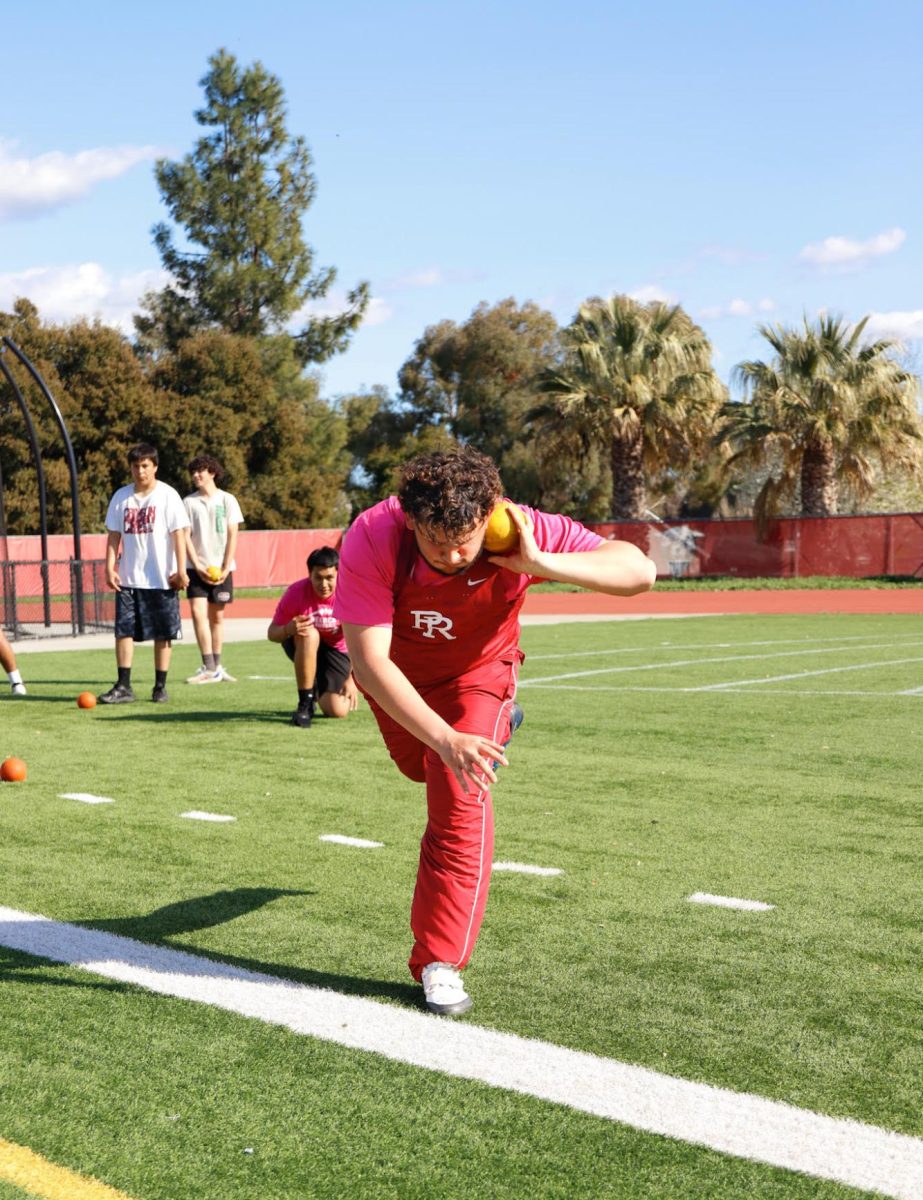[cbtabs][cbtab title=”English”]
ELL students have an alarmingly low number of resources to succeed in their goal to graduate high school
[dropcap size=small]D[/dropcap]iane Rojo arrived in Paso last spring. But her experience this year in English has been far from rosy.
“You arrive here but you don’t know anything and you are stuck with ideas that you don’t understand. It’s difficult to learn these levels of English because there are [many] subjects [and] you have to learn in [a new language] at the same time. You feel more confident when you are grouped with students that don’t know English,” Rojo said.


Many English Language Learner (ELL) students have been enrolled in courses alongside fluent English speakers, after years of being enrolled in sheltered courses. Many of PRHS’ 174 ELL students, teachers and counselors are raising concerns that their needs are not being addressed. Despite efforts to provide extra assistance to ELL students, many Spanish speaking students feel that they are unable to learn adequately due to a lack of understanding in classes geared toward fluent English speakers.
Of 57 ELL students surveyed October 26, 2017, 84.2 percent said that they felt their level of English either was or was at times, a barrier to their understanding of the material in the classes in which they are enrolled.

An additional 83.9 percent said that they would or at times would receive better grades in their native language.
Tenth-grade Counselor Xelina Rojas confirmed she has heard such sentiments. “Often times students tell me they want to provide answers in classes but are embarrassed by their accents as they have been made fun of in prior experiences [of speaking in class],” Rojas said.
Veteran EL teacher Carrie Baldovin, one of several English teachers balancing EL and fluent language paces laments both the enrollment change and a lack of curriculum. “When enrollment went up someone decided to take EL classes and make them combo classes…The students who are second language learners are suffering because the pace is too fast…the college prep students are frustrated because the pace is often too slow.”
“It’s difficult because sometimes I would like to talk to [the fluent English students] but I don’t know how to speak English. I prefer to go to those who don’t speak English in order to understand better,” ELL student Claudia Valenzuela said.
Baldovin’s 5th-period class is composed of around half SDAIE 3 students and half fluent English-speaking English 3 students.

She also explained the English Department adopted Springboard texts specifically for their strong English language development component. Yet “these materials for EL learners are just sitting in the library.”
District ELD Coordinator Heather Stover explained that teachers are, “… encouraged to use [the Springboard ELD materials] to supplement the learning for EL students as needed,” ELD and ELA Instructional Coach Kelly Green have been working with teachers to use available resources, according to Stover.
When students migrate to the U.S. and enroll at PRHS with little to no English speaking skills, they are placed in an English Newcomer class to help them get a basic understanding of the new language. Additionally, newcomers have access to Compas, a tutorial period run by bilingual teacher Geof Land that provides them with assistance in their studies.
 Even so, some surveyed students reported that they believed the school could help them graduate by providing them with more bilingual teachers and presenting the material in Spanish textbooks. In the survey, students commented, “more help please,” and “help me with books in Spanish.”
Even so, some surveyed students reported that they believed the school could help them graduate by providing them with more bilingual teachers and presenting the material in Spanish textbooks. In the survey, students commented, “more help please,” and “help me with books in Spanish.”
“Sometimes I don’t understand how to read explanations that are in English and because I don’t understand it, it gets difficult for me,” Valenzuela said.
Rojas thinks the students are right.

“There is not sufficient support. Additional paraeducators [are needed], but a tutorial like Compas for the newcomers has proven to be much needed. It is a safe place where they can ask questions and get things explained in their native language. We have more students wanting to participate but [the] lack of additional AVID volunteers is problematic,” Rojas said.
Land has been meeting with the administration to advocate for ELL students’ needs since September.

“I remain concerned that our [ELL] students are not receiving the counseling and academic support that they need to succeed. It seems like a huge gap in our program services…we are not doing all we can do…there has never been a clear, coordinated effort among PRHS admin and teachers to target, identify and support the specific needs of [ELL] students,” Land said.
An EL study group convened Nov. 1, 2017, largely from Land’s emails and campaigning. In attendance were administrators and teachers, who reported they are aware of the problem and actively seeking a solution.
According to Land, it is possible that PRHS is not “fulfilling the spirit of Federal law” with regards to ELL students, and suggested an internal audit to determine whether PRHS is complying with Title VI.
But Stover maintained that the district was compliant with Title VI. She said that the district “went through an exhaustive Federal audit and had zero areas which were out of compliance for [ELL] students,” Stover said.
Land said he has requested a copy of the audit to determine whether ELLs are receiving the funds they need but has yet to receive one. “A paper copy of the audit does not exist…the entire audit is done online and through site visitation by a Federal program monitoring team from the California State Department [of Education],” Stover said.
Laws governing ELL instruction include the Title VI of the Civil Rights Act of 1964, which “prohibits discrimination on the basis of race, color, or national origin in any program or activity that receives Federal funds or other Federal financial assistance.” These guidelines have been “interpreted to prohibit denial of equal access to education because of a language minority student’s limited proficiency in English.”
Graduation rates indicate that previous EL plans of sheltered and SDAIE instruction have led to 91.6 percent graduation rate for 2016-2017 school year, up from the 88.5 percent in 2015-2016, but below the 94 percent rate that PRHS students graduate overall.
ELL students at PRHS had a 4.4 percent dropout rate, compared to a .5 percent at the school overall, according to California Dept. of Education.
“We don’t have high dropout rates, and we don’t use ‘leveled English,’ so to draw the conclusion that we are not providing equal educational opportunity is a stretch,” Stover said.

Only one student of the 11 ELL’s that graduated in the 2016-2017 school year had acquired the UC/CSU Required Courses to attend college, according to records collected by the California Dept. of Education, But Stover indicated this number may increase in the future as A-G approvals for ELD and the SDAIE ELA classes increase.
Still, graduation worried surveyed EL students: 77.2 percent of respondents said that the possibility of not graduating from PRHS worries or at times worries them.

Several persons close to the situation have noted the shortage of paraeducator support for EL students. Though 95.9 percent ELL students speak Spanish, two bilingual paraeducators and one migrant paraeducator are spread across several classrooms to help those students that are unable to understand the material in English. With only three, “they are not able to effectively serve the ELLs in this manner,” Rojas said. In addition, one paraeducator will soon be out on maternity leave. PRHS is “working on a substitute,” according to deputy principal Nathan Meinert.
Teachers of ELL students are at “a variety of places” with Spanish fluency, said Meinert. They must be credentialed to teach ELL but fluency in a foreign language is not required.
“[ELL]’s are served by having highly qualified teachers who know how to meet their unique learning needs,” Stover said.
However, it’s “another question…whether teachers are applying these strategies,” Rojas said.
Meinert explained that expansion of professional development is planned and that PRHS is dedicated to “continuous improvement” and “relentless pursuit of what’s best” for ELL students.
Curiously, one EL teacher found that some students had trouble reading Spanish questions due to the fact that they were placed in English immersion classes at a young age and never had the opportunity to learn how to read and write in their native language.
ELL students’ native languages include Spanish, Vietnamese, Mixteco, Mandarin, and Thai, according to records from the 2016-2017 school year.
Teachers are hopeful that the Chromebook rollout across all grade levels will help bring down the language barriers. Already the Chromebooks are making a difference for ELL students, according to sources.
[/cbtab][cbtab title=”Spanish”]

[dropcap size=small]M[/dropcap]uchos estudiantes de aprendizaje del idioma inglés (ELL) han sido inscritos en cursos con hablantes de inglés avanzadas , después de años de estar inscritos en cursos separados, según maestros y estudiantes, creando experiencias difíciles para los 174 estudiantes ELL en PRHS y creando preocupaciones que sus necesidades no están cumplidos. A pesar de los esfuerzos para asistir más a los estudiantes ELL, muchas estudiantes que hablan español que no son capaces de aprender adecuadamente debido a la falta de materias en las clases dirigido a estudiantes ELL.
 “Se llega aquí pero no sabe nada y se pega con ideas que no entiendes. Es difícil aprender estos niveles de inglés porque hay muchas clases donde se necesita aprender en [un nuevo idioma] al mismo tiempo. Se siente más seguro cuando se agrupan con los estudiantes que no saben inglés,”ELL estudiante Diane Rojo dijo.
“Se llega aquí pero no sabe nada y se pega con ideas que no entiendes. Es difícil aprender estos niveles de inglés porque hay muchas clases donde se necesita aprender en [un nuevo idioma] al mismo tiempo. Se siente más seguro cuando se agrupan con los estudiantes que no saben inglés,”ELL estudiante Diane Rojo dijo.
84.2 por ciento de 57 estudiantes ELL encuestados dijeron que sentían que su nivel de inglés era o era a veces una barrera para su comprensión del material en las clases que están inscriptos. 83.9 por ciento dijeron que recibieron o recibirán a veces mejor calificaciones en su lengua materna.
 Después de años de tener cursos separados de inglés SDAIE (específicamente diseñado instrucción académica en inglés) y preparación para la universidad, la maestra de inglés 3 Carrie Baldovin dijo que este año tiene estudiantes de SDAIE 3 inscritos en el mismo período de clase con ingles 3 para estudiantes anglohablantes. “Cuando la escuela creció alguien decidió tomar clases EL y hacerlas clases combinadas … Los estudiantes ELL están sufriendo porque el ritmo es demasiado rápido y no puedo usar los materiales de Springboard que compraron para su clase. Las estudiantes anglohablantes sienten frustrados porque el ritmo es a menudo demasiado lento,” dijo Baldovin. La clase de quinto período de Baldovin está compuesta por aproximadamente mitad estudiantes ELL y mitad estudiantes anglohablantes.
Después de años de tener cursos separados de inglés SDAIE (específicamente diseñado instrucción académica en inglés) y preparación para la universidad, la maestra de inglés 3 Carrie Baldovin dijo que este año tiene estudiantes de SDAIE 3 inscritos en el mismo período de clase con ingles 3 para estudiantes anglohablantes. “Cuando la escuela creció alguien decidió tomar clases EL y hacerlas clases combinadas … Los estudiantes ELL están sufriendo porque el ritmo es demasiado rápido y no puedo usar los materiales de Springboard que compraron para su clase. Las estudiantes anglohablantes sienten frustrados porque el ritmo es a menudo demasiado lento,” dijo Baldovin. La clase de quinto período de Baldovin está compuesta por aproximadamente mitad estudiantes ELL y mitad estudiantes anglohablantes.
 Cuando los estudiantes migran a los EE.UU y se inscriben en PRHS con poca o ninguna habilidad de hablar inglés, se les coloca en una clase de inglés para recién llegados para ayudarlos a obtener una comprensión básica del nuevo idioma. Además, los recién llegados tienen acceso a Compás, un período de tutorial que les asiste en sus estudios. Aun así, algunos estudiantes encuestados dijeron que creían que la escuela podría ayudarlos a graduarse proporcionándoles más maestros bilingües y presentando la materia en español.
Cuando los estudiantes migran a los EE.UU y se inscriben en PRHS con poca o ninguna habilidad de hablar inglés, se les coloca en una clase de inglés para recién llegados para ayudarlos a obtener una comprensión básica del nuevo idioma. Además, los recién llegados tienen acceso a Compás, un período de tutorial que les asiste en sus estudios. Aun así, algunos estudiantes encuestados dijeron que creían que la escuela podría ayudarlos a graduarse proporcionándoles más maestros bilingües y presentando la materia en español.
“Aunque no hay suficiente apoyo para los estudiantes EL, [por ejemplo] más paraeducadores [son necesarios],un tutorial como Compás para los recién llegados es muy necesario. Es un lugar seguro donde pueden hacer preguntas y explicar las cosas en su idioma nativa. Tenemos más estudiantes que desean participar, pero la falta de voluntarios adicionales de AVID es problemático, ” dijo la consejera de estudiantes recién llegados y los de grado 10, Xelina Rojas.
 El maestro bilingüe y director de Compás, Geof Land, se ha reunido con la administración para abogar por las necesidades de los estudiantes de ELL desde septiembre. “Me preocupa que nuestros estudiantes EL no reciban el consejo y el apoyo académico que necesitan para tener éxito. Parece una enorme diferencia entre los servicios de nuestro programa … no estamos haciendo todo lo que podemos hacer…Nunca había un esfuerzo claro y coordinado entre los administradores y maestros de PRHS para identificar y apoyar las necesidades específicas de los estudiantes EL,” dijo Land.
El maestro bilingüe y director de Compás, Geof Land, se ha reunido con la administración para abogar por las necesidades de los estudiantes de ELL desde septiembre. “Me preocupa que nuestros estudiantes EL no reciban el consejo y el apoyo académico que necesitan para tener éxito. Parece una enorme diferencia entre los servicios de nuestro programa … no estamos haciendo todo lo que podemos hacer…Nunca había un esfuerzo claro y coordinado entre los administradores y maestros de PRHS para identificar y apoyar las necesidades específicas de los estudiantes EL,” dijo Land.
Según Land, es posible que PRHS no esté “cumpliendo con el espíritu de la ley federal” con respecto a los estudiantes ELL, y sugirió una auditoría interna para determinar si PRHS está cumpliendo con el Título VI. Sin embargo, la coordinadora de ELD Heather Stover desestimó tales preocupaciones. “[El Distrito Escolar Unificado Conjunto Paso Robles] pasó una auditoría federal exhaustiva y no tenía áreas que no cumplian con la ley para los estudiantes EL”, dijo Stover. Land dijo que solicitó una copia de la auditoría para determinar si los estudiantes ELL están recibiendo los fondos que necesitan pero hasta ahora no lo ha recibido.
 Las leyes que dirigen la instrucción de ELL incluyen el Título VI de la Ley de Derechos Civiles de 1964; un requisito bajo la Ley de Derechos Civiles que “prohíbe la discriminación por raza, color u origen nacional en cualquier programa o actividad que reciba fondos federales u otra asistencia financiera federal.” Estas pautas han sido “interpretadas para prohibir la denegación de acceso equitativo”. a la educación debido a la competencia limitada del inglés de una minoría lingüística.” La ley establece que “las altas tasas de deserción escolar y el uso de materiales de ‘nivelado en inglés’ indican que el distrito no está ofreciendo la misma oportunidad educativa” para los estudiantes ELL. 91.6 por ciento de los estudiantes ELL se graduaron en el año escolar 2016-2017, después de 88.5 por ciento en 2015-2016, pero menos de 94 por ciento que los estudiantes de PRHS se gradúan en general. Los estudiantes de ELL en PRHS tuvieron una tasa de deserción de 4.4 por ciento, en comparación con un .5 por ciento en la escuela en general, según el Departamento de Educación de California. Solo un estudiante de los 11 ELL que se graduó en el año lectivo 2016-2017 había adquirido los cursos obligatorios UC/CSU para asistir a la universidad, según los registros recopilados por el Departamento de Educación de California.
Las leyes que dirigen la instrucción de ELL incluyen el Título VI de la Ley de Derechos Civiles de 1964; un requisito bajo la Ley de Derechos Civiles que “prohíbe la discriminación por raza, color u origen nacional en cualquier programa o actividad que reciba fondos federales u otra asistencia financiera federal.” Estas pautas han sido “interpretadas para prohibir la denegación de acceso equitativo”. a la educación debido a la competencia limitada del inglés de una minoría lingüística.” La ley establece que “las altas tasas de deserción escolar y el uso de materiales de ‘nivelado en inglés’ indican que el distrito no está ofreciendo la misma oportunidad educativa” para los estudiantes ELL. 91.6 por ciento de los estudiantes ELL se graduaron en el año escolar 2016-2017, después de 88.5 por ciento en 2015-2016, pero menos de 94 por ciento que los estudiantes de PRHS se gradúan en general. Los estudiantes de ELL en PRHS tuvieron una tasa de deserción de 4.4 por ciento, en comparación con un .5 por ciento en la escuela en general, según el Departamento de Educación de California. Solo un estudiante de los 11 ELL que se graduó en el año lectivo 2016-2017 había adquirido los cursos obligatorios UC/CSU para asistir a la universidad, según los registros recopilados por el Departamento de Educación de California.
52.6 por ciento de los 57 estudiantes ELL encuestados dijeron que los maestros explican el material de una manera que entienden, y 68.4 por ciento dijeron que tienen el apoyo necesario para aprender una nueva idioma. Sin embargo, solo 42.1 por ciento de los encuestados dijeron que se sienten suficientemente ayudados en sus clases, y 77.2 por ciento de los encuestados dijo que la posibilidad de no graduarse de PRHS les preocupa o a veces les preocupa.
Con 95.98 por ciento de estudiantes ELL hablando español, dos paraeducadores bilingües se distribuyen en varios clases para ayudar a los estudiantes que no pueden entender la materia en inglés. Con solo dos, “no pueden servir efectivamente a los ELL de esta manera”, dijo Rojas.
Ser bilingüe no es un requisito para enseñar a los estudiantes ELL, y los maestros con estudiantes ELL se encuentran en “una variedad de lugares” con fluidez en español, según el subdirector Nathan Meinert. Una certificación efoo uspecial del Distrito Escolar Unificado Conjunto Paso Robles (PRJUSD) de PRHS tampoco se requiere para enseñar ELL, pero las credenciales de enseñanza a menudo incluyen estrategias para enseñar a ELLs, de acuerdo con un maestro ELL que deseaba permanecer en el anonimato. Tales cursos se ofrecen, sin embargo. “Los estudiantes de EL reciben maestros altamente calificados que saben cómo satisfacer sus necesidades únicas de aprendizaje. El distrito ofrece desarrollo profesional para maestros en diferentes estrategias para ayudar a los EL a adquirir lenguaje mientras aprenden contenido “, dijo Stover. Sin embargo, todavía hay cuestión si “los maestros están usan estas estrategias,” dijo Rojas.Meinert dijo que la expansión del desarrollo profesional está planificada, y que PRHS está dedicada a la “mejora continua” y la “búsqueda incansable de lo mejor” para los estudiantes ELL.
Rojas dijo que los estudiantes de ELL a veces se sienten desalentados de participar en clase. “Muchas veces los estudiantes me dicen que quieren dar respuestas en las clases, pero les avergüenzan sus acentos, ya que fueron burlado por los en experiencias pasadas,” dijo Rojas.
Al distribuir la encuesta, uno de los maestros de ELL -quien desea ser una fuente anónima- descubrió que los estudiantes colocados en sus clases de aprendizaje estratégico tenían problemas leyendo las preguntas en español debido a que fueron colocados en clases de inmersión en inglés a una edad joven y nunca tuvieron la oportunidad de aprender a leer y escribir en su lengua materna.
Los maestros tienen la esperanza de que los Chromebooks ayudarán a reducir las barreras del idioma incorporándolas a los planes de lecciones diarias. Un maestro anónimo de ELL dijo que los Chromebooks ya estaban “haciendo una gran diferencia” para los estudiantes de ELL.
Los idiomas nativos de los estudiantes ELL incluyen español, vietnamita, mixteco, mandarín y tailandés según los registros del año escolar 2016-2017.
[/cbtab][/cbtabs]



















